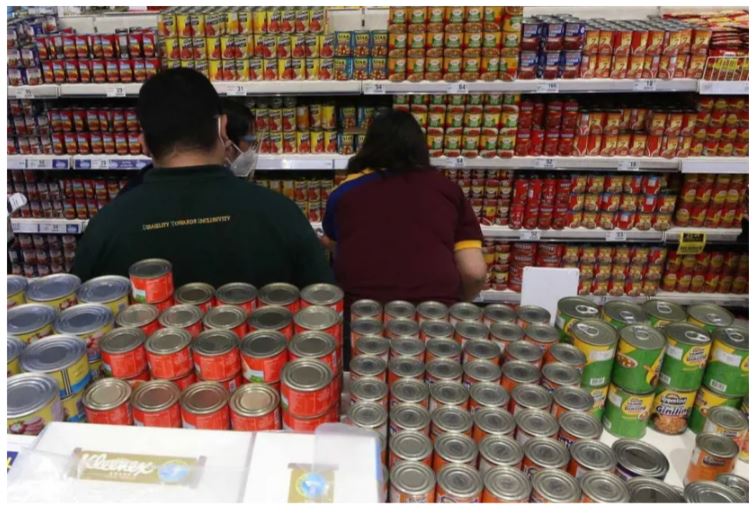Philippines: Inflation likely higher; tightening to continue
KEY interest rates will likely be raised anew as inflation is expected to have accelerated last month and remain elevated in the first few months of 2023, analysts said.
While December consumer price growth may not have not breached the Bangko Sentral ng Pilipinas’ 7.8 to 8.6 forecast for the month, a continued rise in core inflation moving forward could prompt continued tightening.
Ahead of the release of official December data this Thursday, Bank of the Philippine Islands lead economist Jun Neri said inflation could have peaked 8.4 percent for 2022, with “higher electricity bills, food and services inflation” as the key drivers.
Domini Velasquez, chief economist at China Bank, had a slightly lower forecast of 8.2 percent but noted that items subject to secondary round effects continued to drive inflation.
“This is evident in the expected increase in core prices, which will likely remain above 6 percent throughout the first half of 2023,” she said.
“Among energy prices, declines in pump prices (diesel, gasoline and kerosene) were likely offset by increases in electricity and LPG (liquefied petroleum gas) prices,” she added.
“For 2023, we expect higher tariffs for both electricity and water to drive supply side inflation. Earlier-than-expected reopening of China will also temper the anticipated decline in oil prices.”
Rizal Commercial Banking Corp. chief economist Michael Ricafort, meanwhile, expects inflation to have stayed at a 14-year high of 8.0 percent last month.
Base effects could see the rate increase early in 2023 but overall the year could see a deceleration in price growth, he added.
Catalysts that could have kept inflation elevated last month, said Ricafort, included global crude prices and damage caused by a recent severe tropical storm.
“Lastly, the seasonal increase in demand during the holiday season in December could have led to some pick up in prices for the month but is expected to seasonally ease after the holidays upon crossing the New Year,” Ricafort said.
“Overall, this high CPI (consumer price index) could support and justify further local policy rate hikes by the BSP that will match future [US] Federal Reserve rate hikes in order to help stabilize the peso exchange rate and, in turn, the country’s overall inflation for the coming year.”
The central bank has indicated that it is not done with adjusting interest rates, with BSP Governor Felipe Medalla last month saying that the likelihood of rates not being adjusted in succeeding policy meetings was “extremely low.”
In forecasting a 7.8- to 8.6-percent result for December, the BSP said that price pressures for the month were expected to have emanated from “higher electricity rates, uptick in the prices of agricultural commodities, elevated meat and fish products, and higher LPG prices.”
“Meanwhile, the reduction in petroleum and rice prices, as well as the peso appreciation, could contribute to easing price pressures for the month,” it added.
“The BSP continues to closely monitor emerging price developments to enable timely intervention that could help prevent the further broadening of price pressures, in accordance with the BSP’s price stability mandate,” the central bank continued.
The BSP’s policymaking Monetary Board raised key interest rates by a total of 350 basis points last year in a bid to temper inflation. The central bank’s benchmark rate currently stands at 5.50 percent.
Lastly, China Bank chief economist Domini Velasquez said December inflation will likely settle at a high of 8.2 percent as consumer prices continue to tick up.
“On the bright side though, month on month, we likely saw reduced momentum of 0.5-percent growth in prices compared with October and November’s month-on-month inflation of 0.9 percent,” she explained.
Domini added that slower oil and food prices were indeed observed for the month of December; but, items who are subject to secondary round effects continued to drive inflation.
“This is evident in the expected increase in core prices, which will likely remain above 6 percent throughout the first half of 2023. Among energy prices, declines in pump prices (diesel, gasoline and kerosene) were likely offset by increases in electricity and LPG prices,” Domini elaborated. “For 2023, we expect higher tariffs for both electricity and water to drive supply side inflation. Earlier-than-expected reopening of China will also temper the anticipated decline in oil prices.”
Source: https://www.manilatimes.net/2023/01/03/business/top-business/inflation-likely-higher-tightening-to-continue/1872577


 English
English




